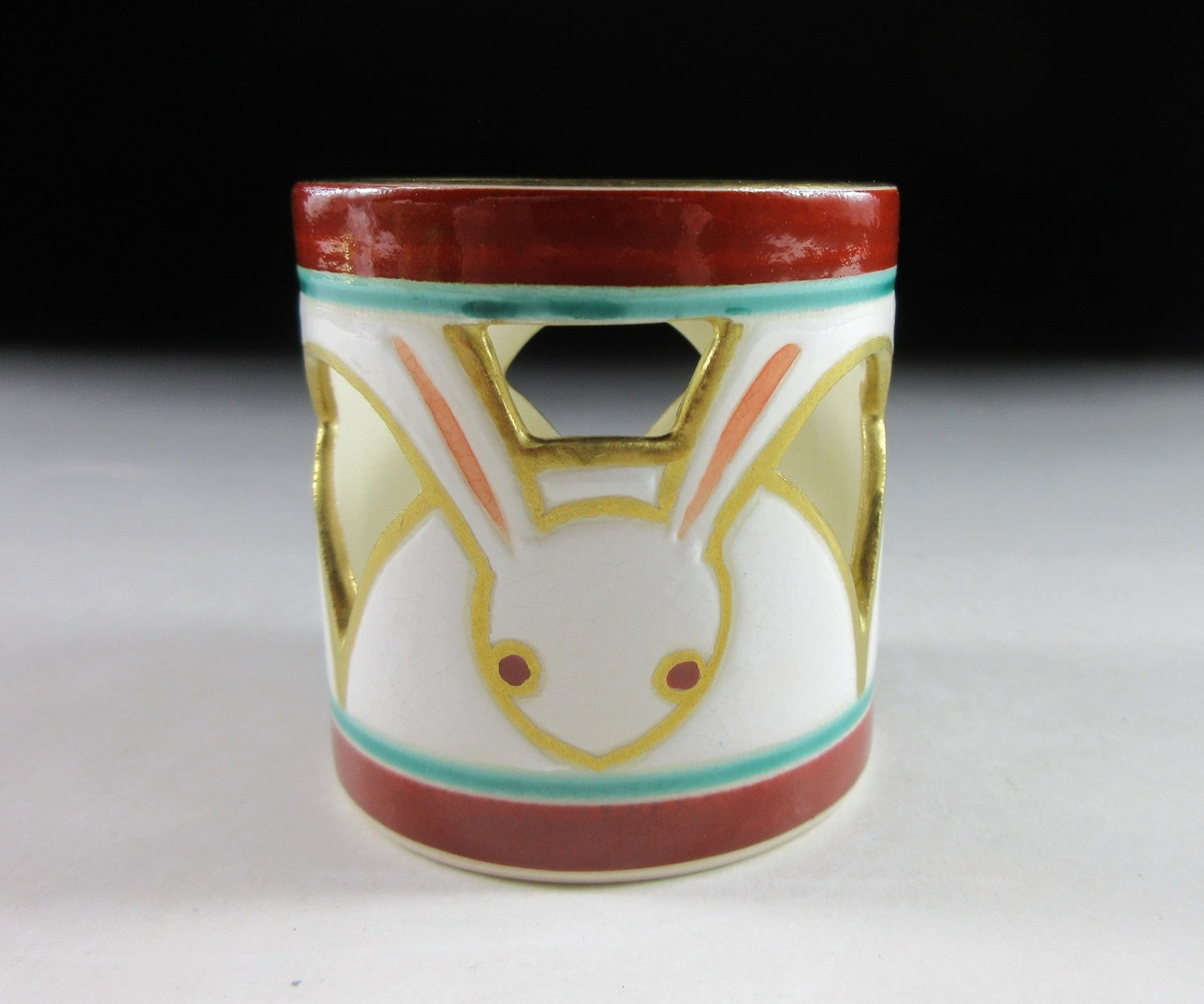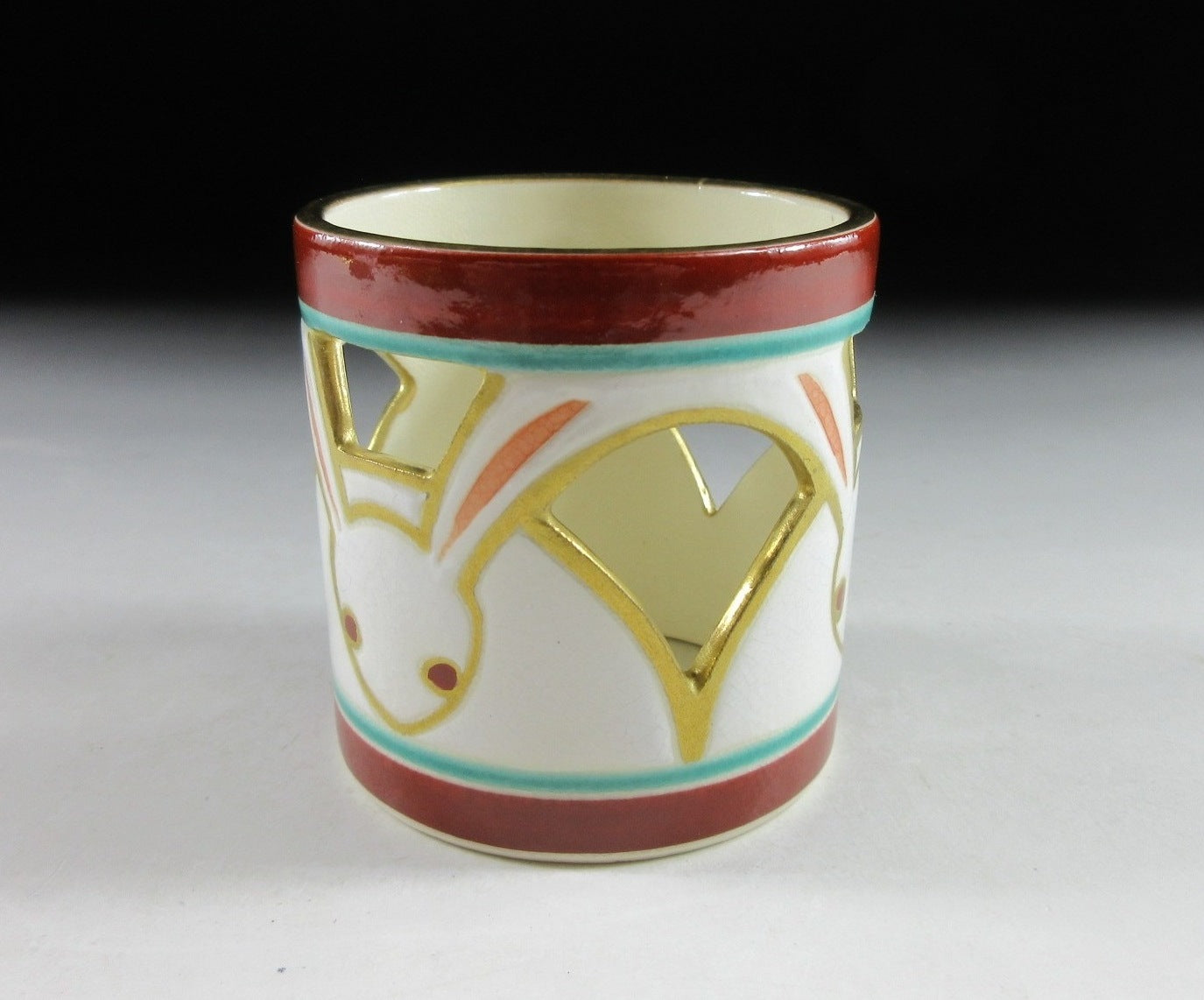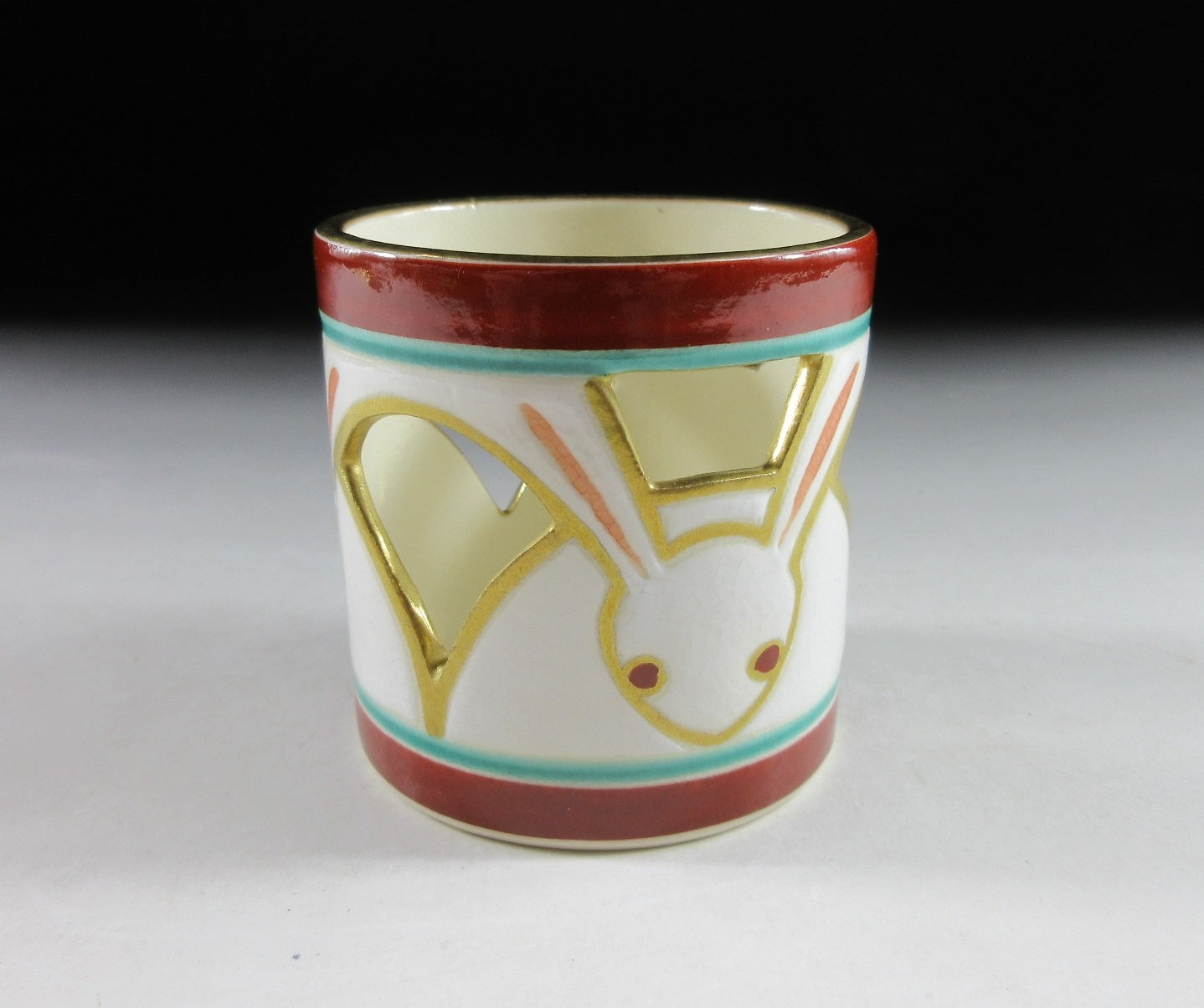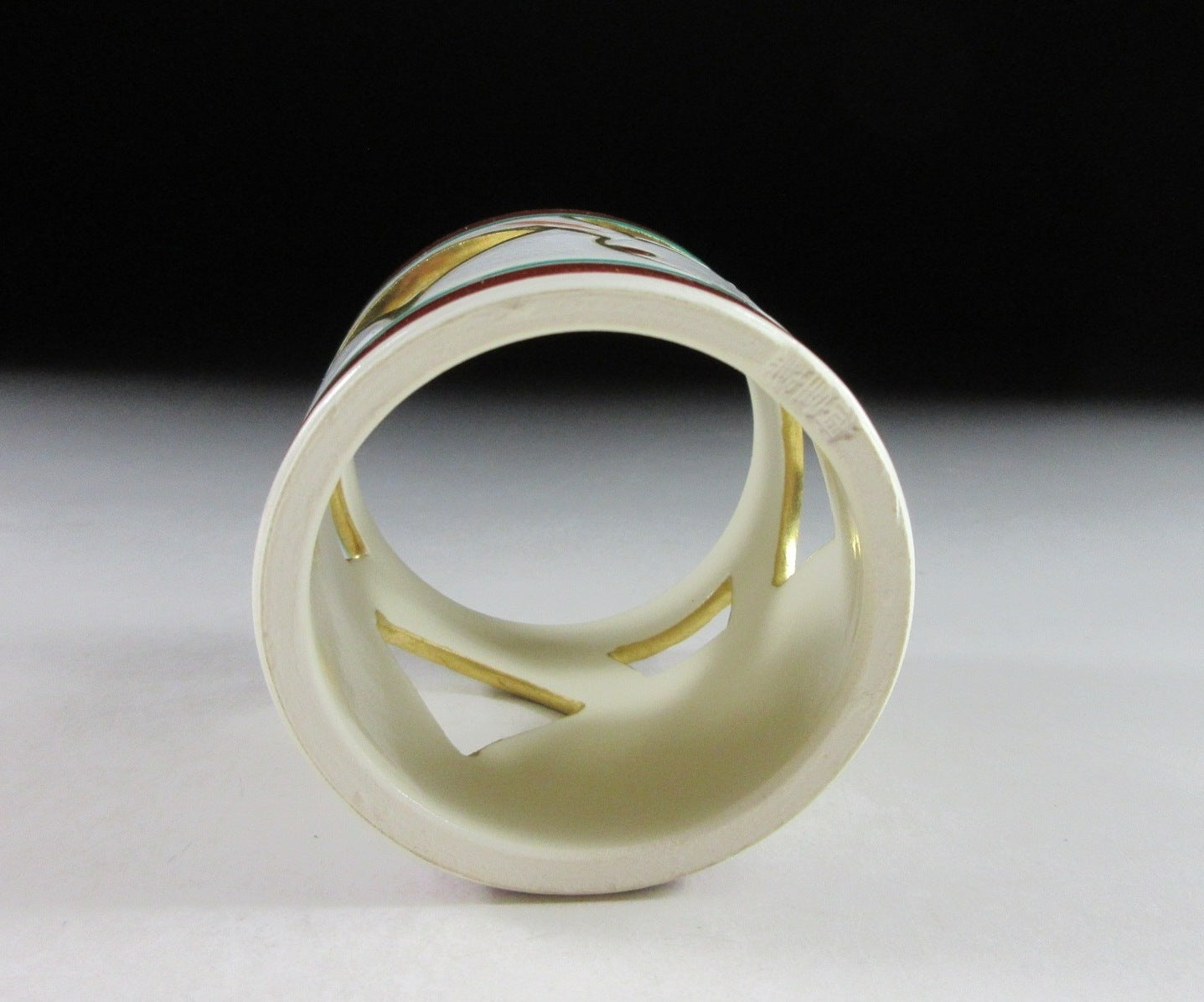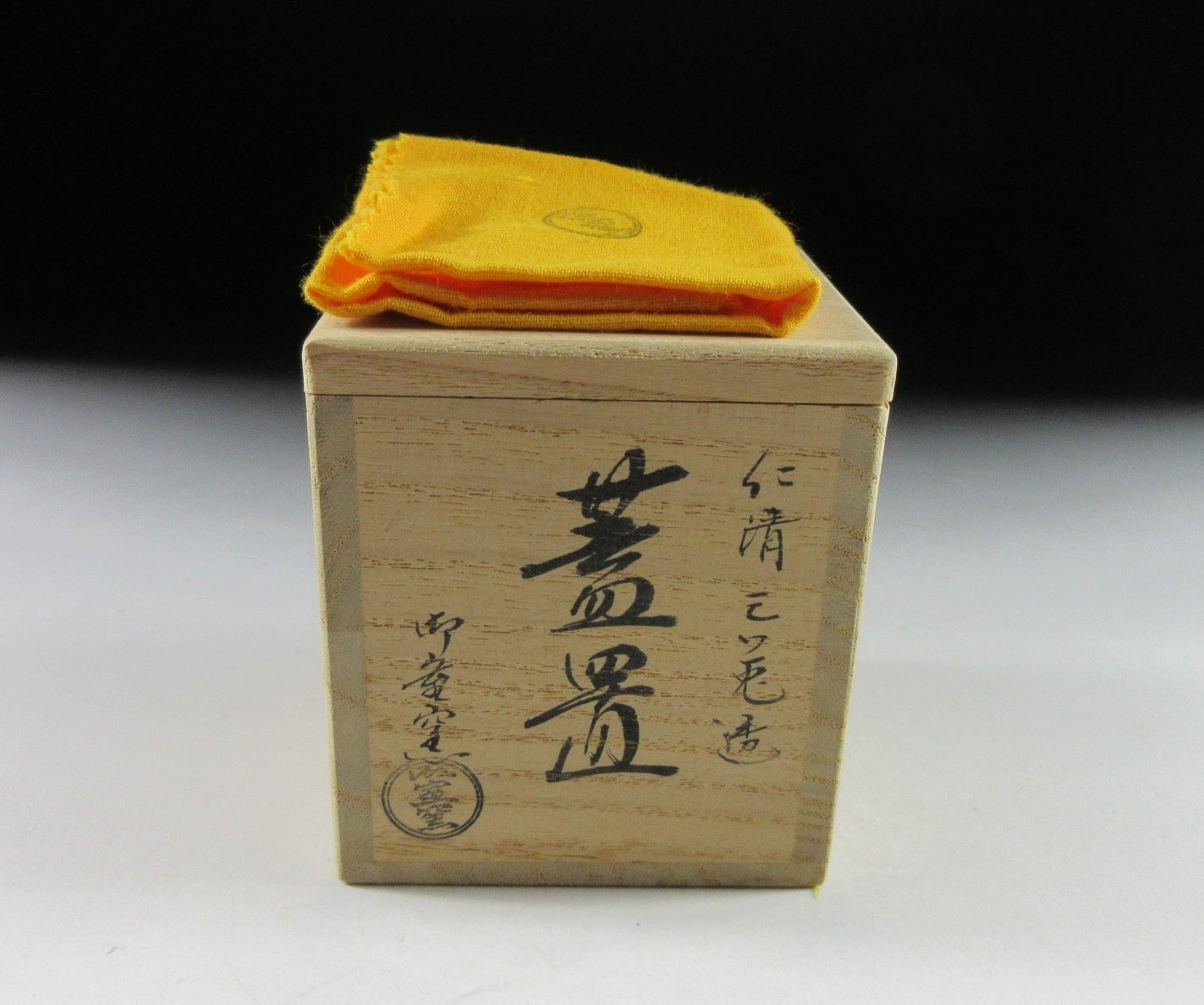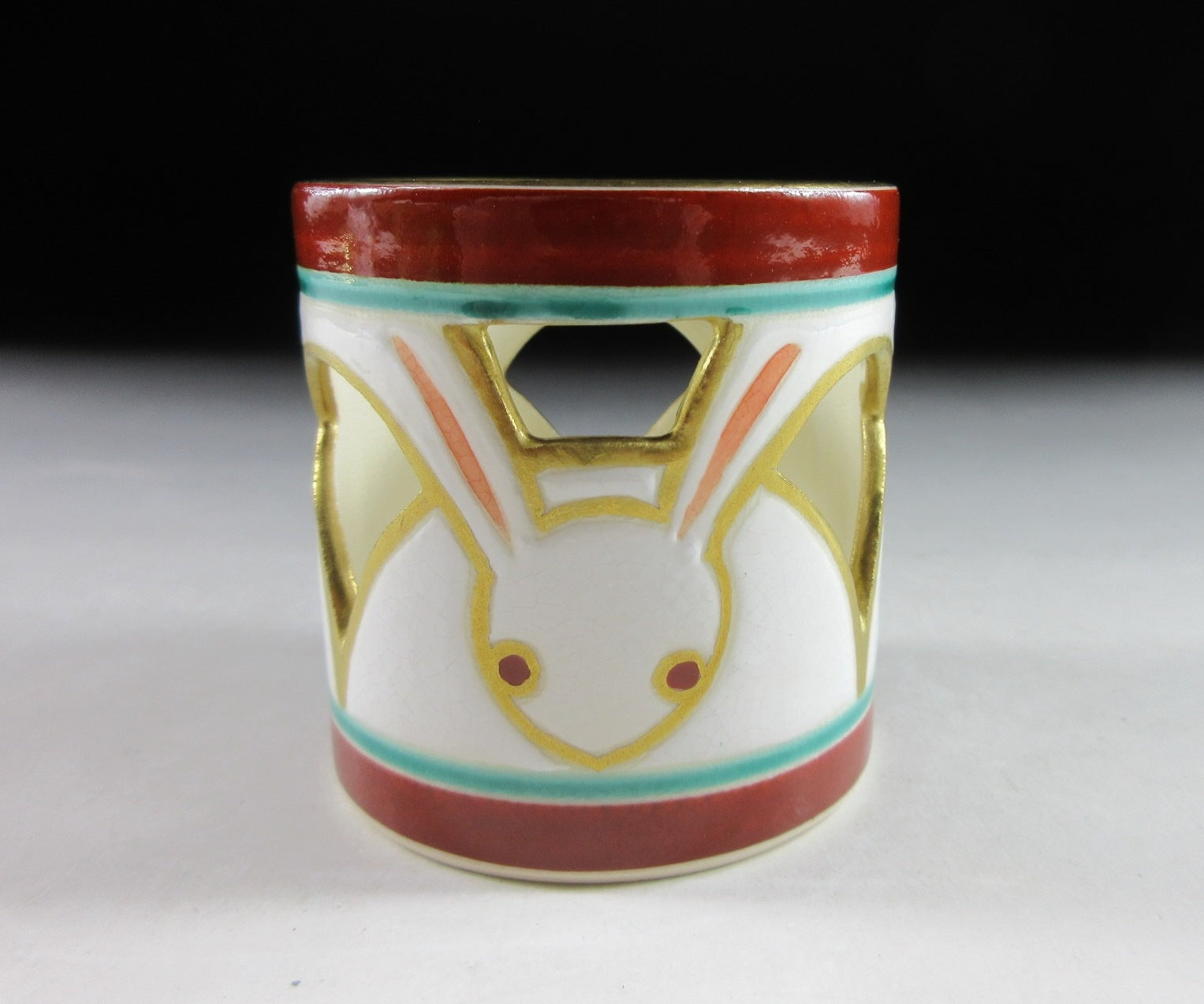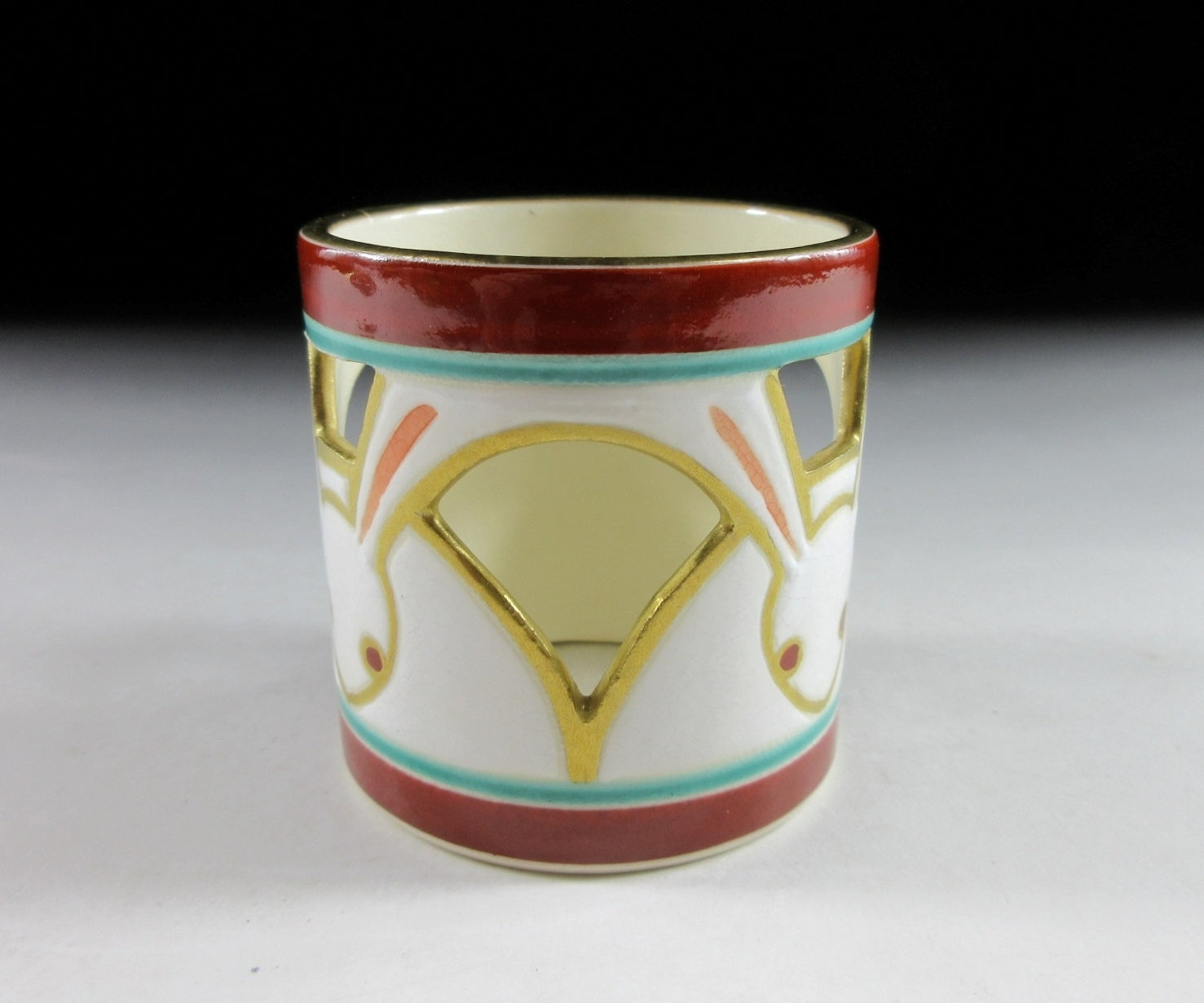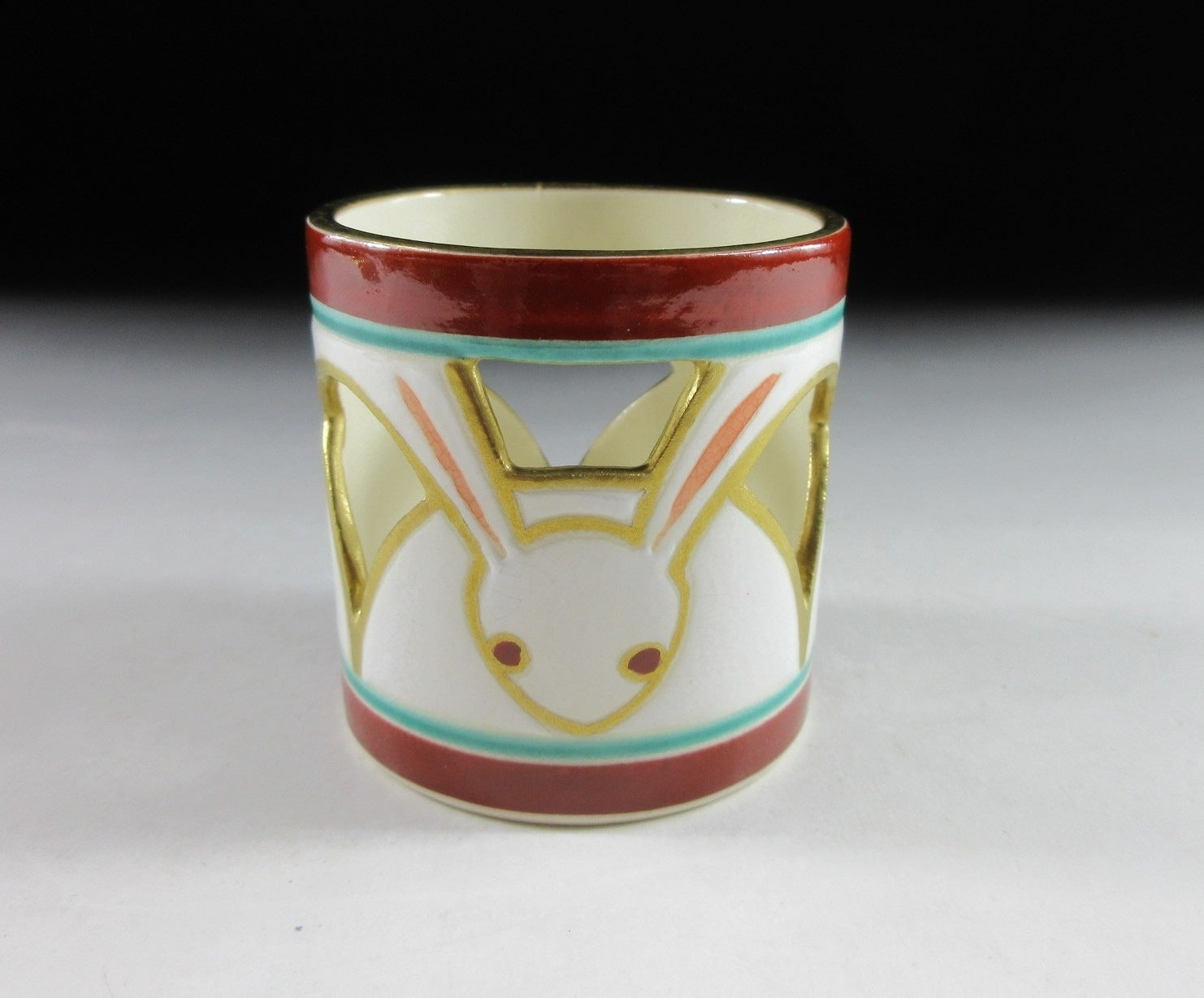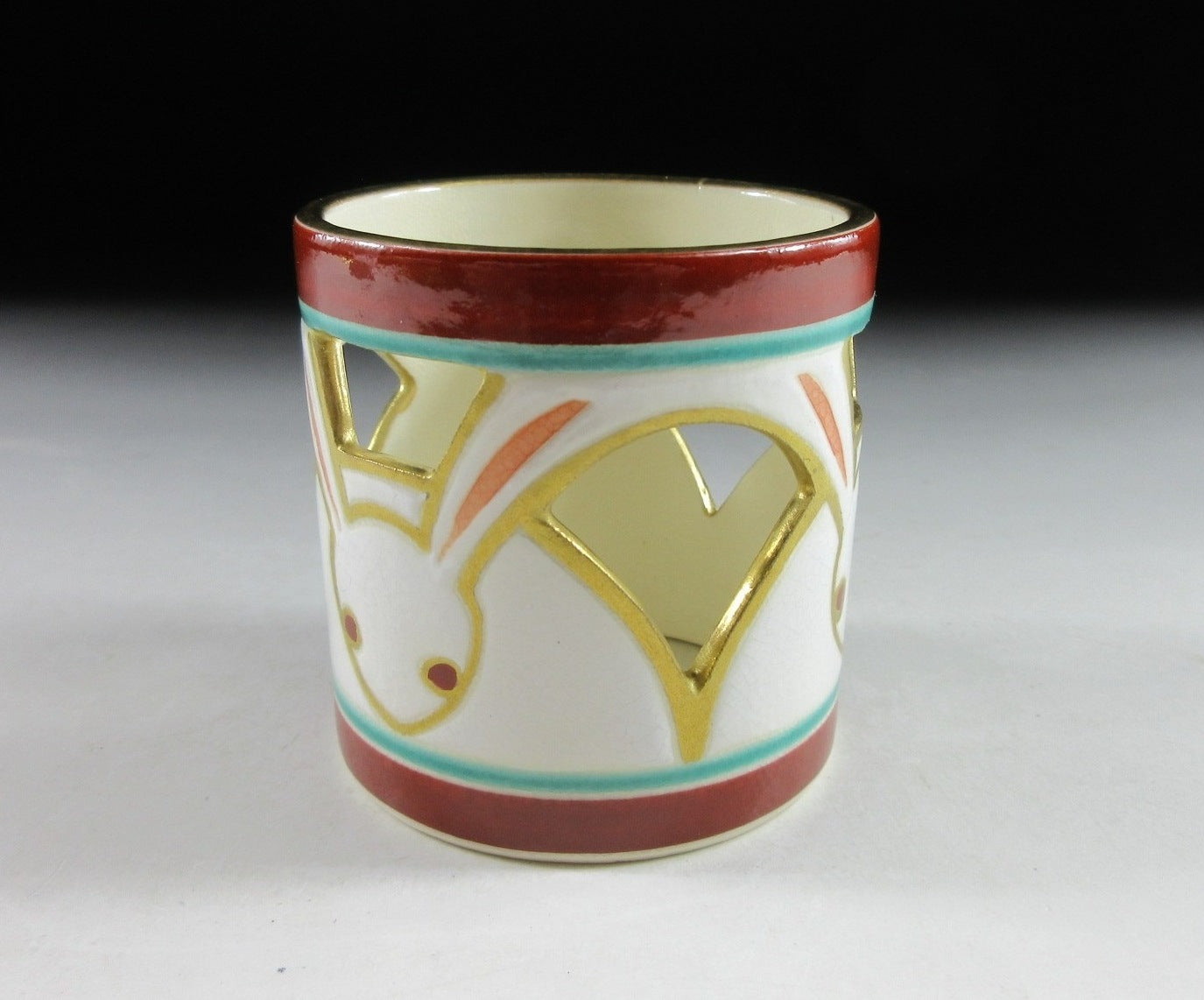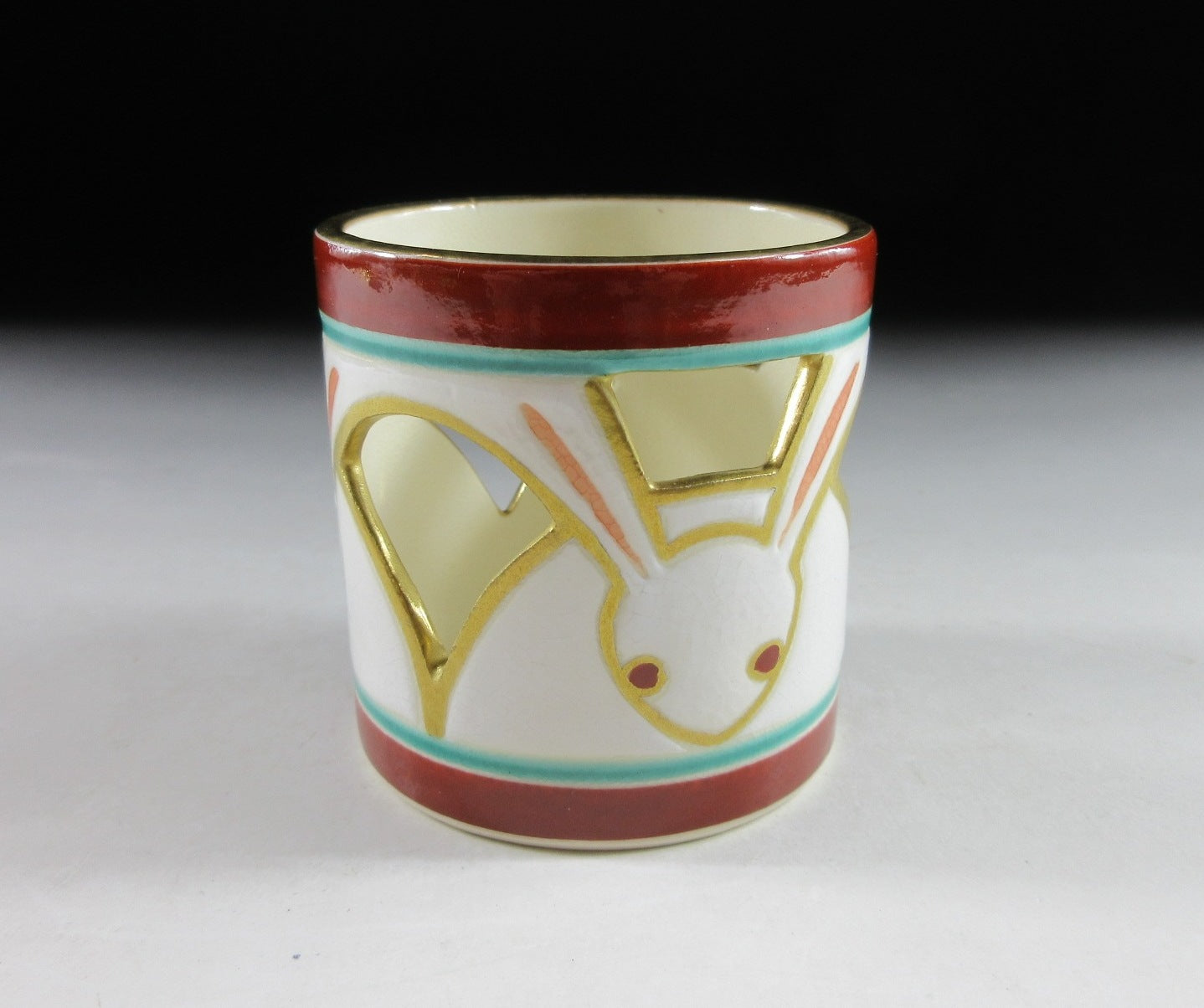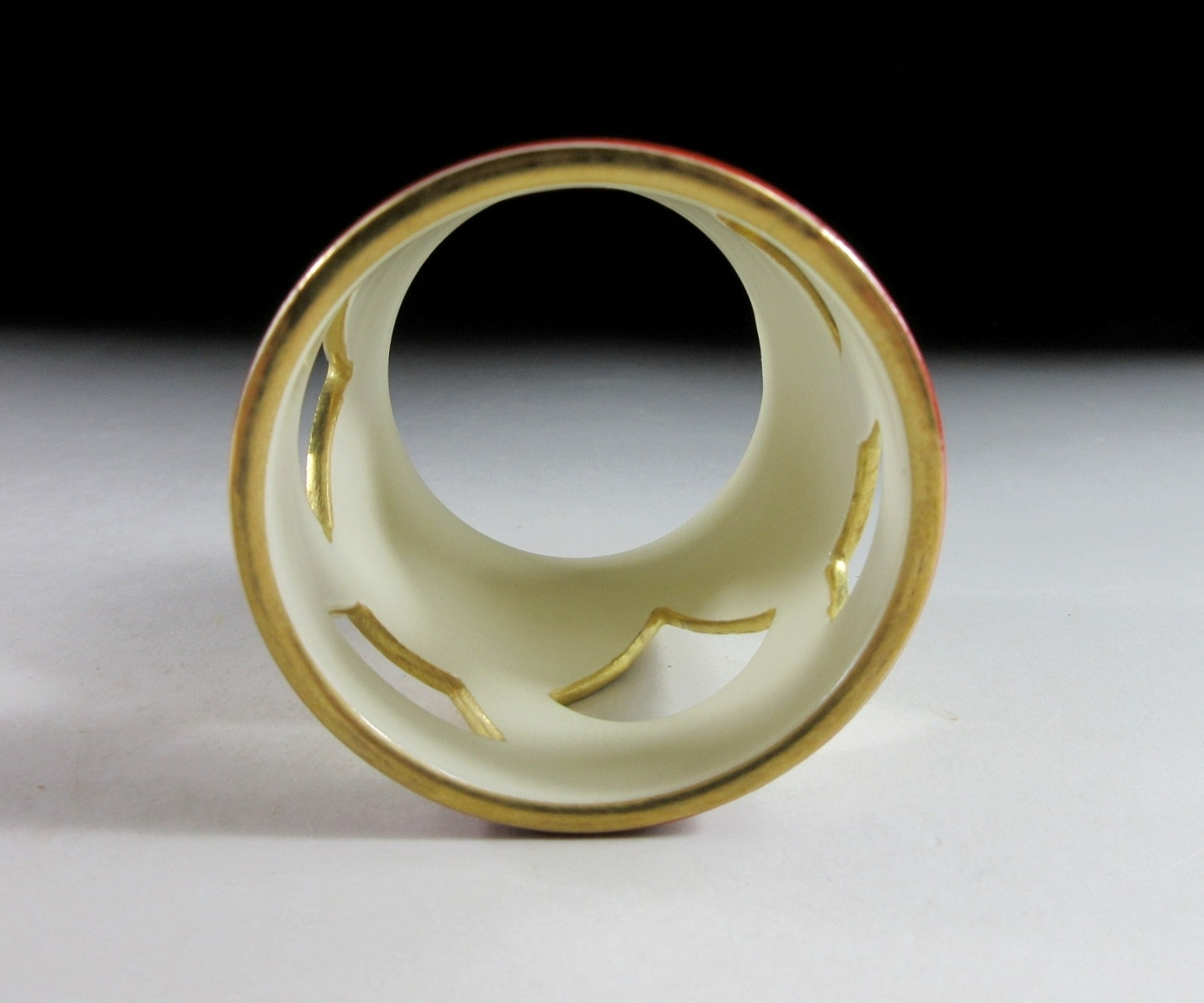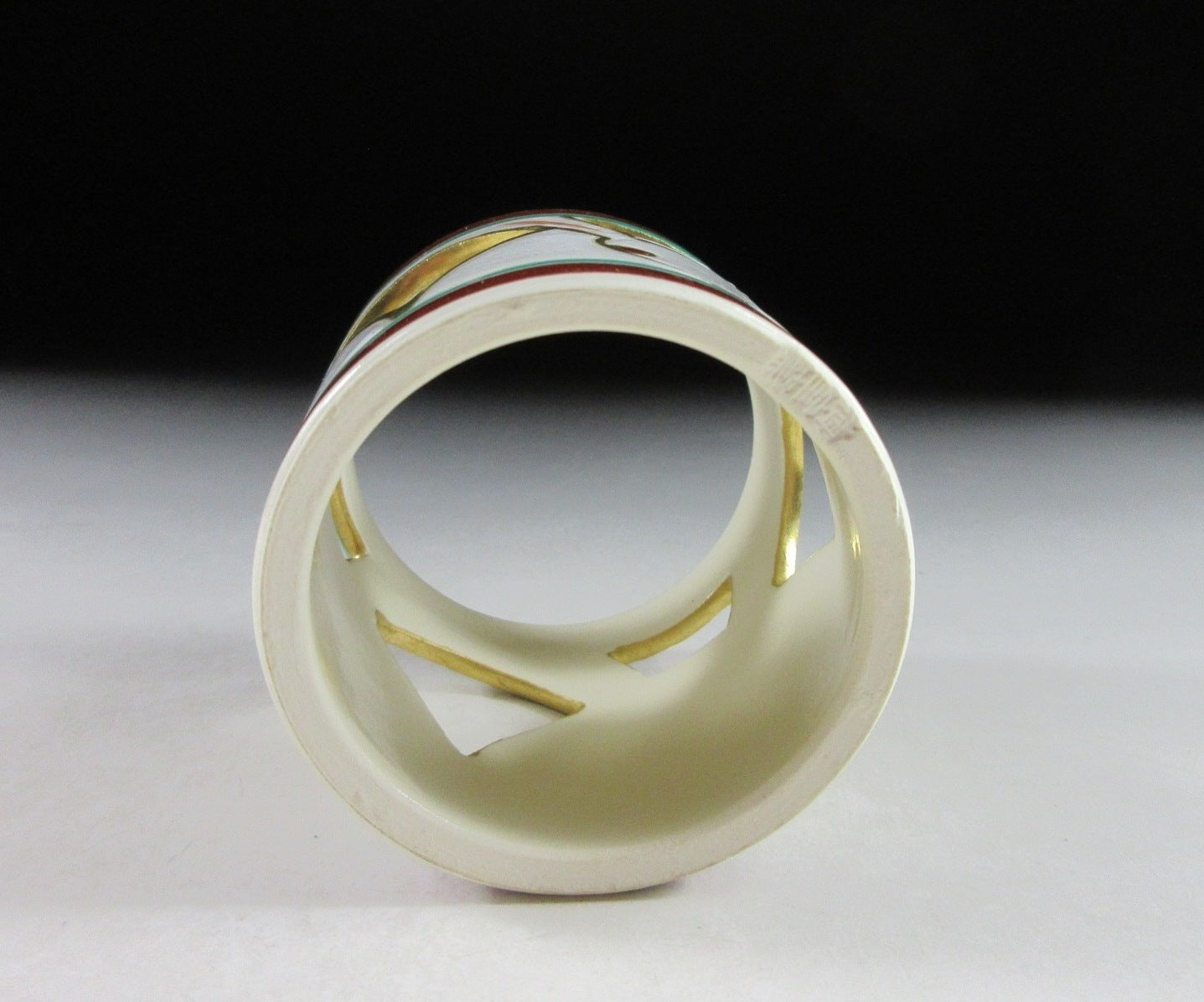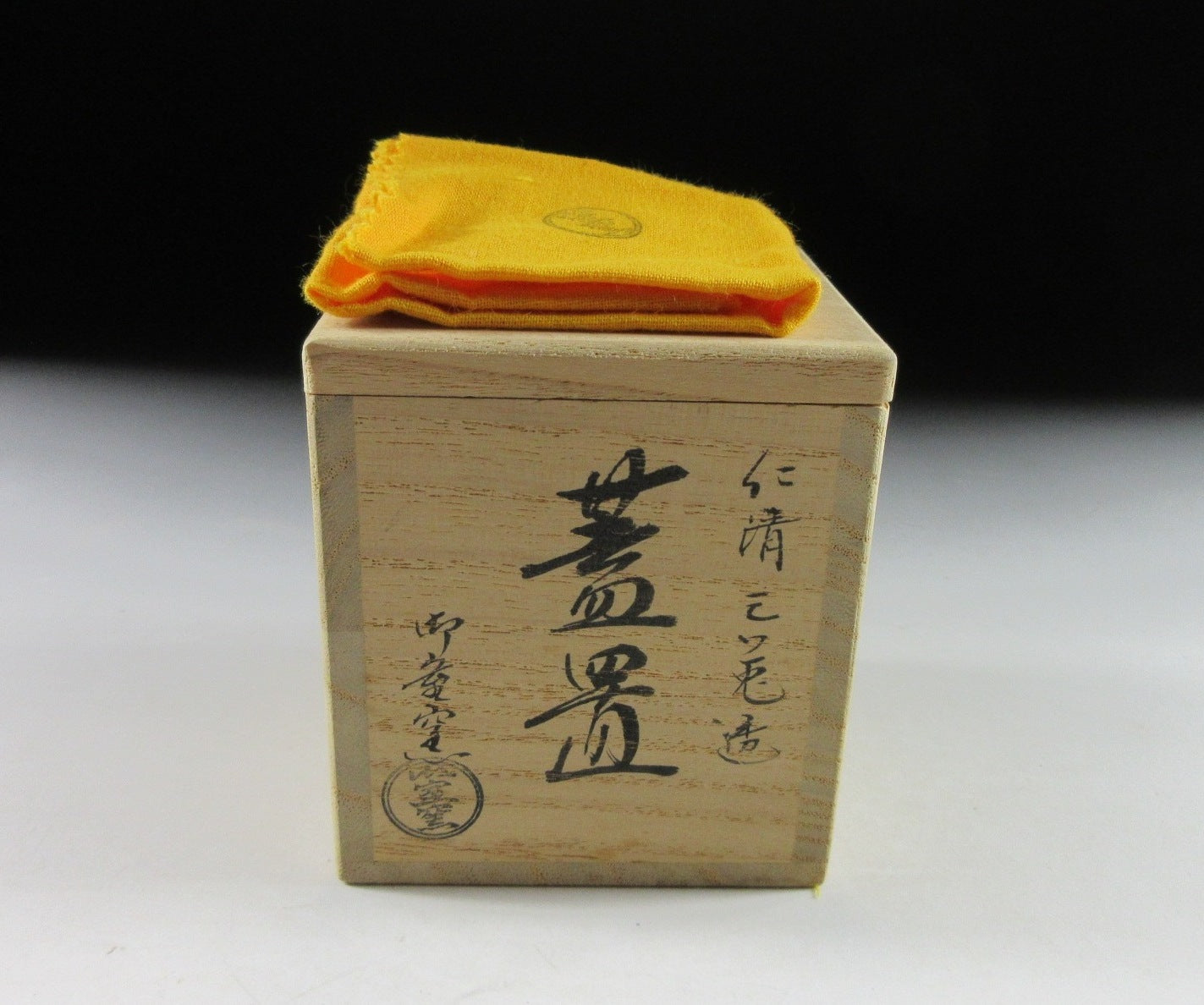Kominka Zakka
Kitamura Wazen IV Omuro-ware Futaoki
Kitamura Wazen IV Omuro-ware Futaoki
Couldn't load pickup availability
*SHIPPING OPTIONS VARY DEPENDING ON THE DESTINATION, PLEASE SCROLL TO THE END OF THIS LISTING FOR MORE DETAILS.
This listing is for an Omuro-ware futaoki made around 10-20 years ago by noted potter, Kitamura Wazen IV. A futaoki functions as a lid rest during the tea ceremony. The lid of the kama is placed on the futaoki when hot water needs to be drawn from the kettle. The bamboo water ladle rests there up until the lid of the kama is removed. The futaoki featured in this listing is wheel-thrown and decorated with a scene from a fable about a rabbit that crossed the sea. According to an old legend, there once was a white rabbit who wished to reach Inaba from the island where he lived. He could not accomplish this on his own, so he decided to trick the sharks into helping him. He spotted a shark just out to sea and called out to it, “I bet there are more of us rabbits than there are sharks. Why don’t you have all the sharks line up and I’ll count them!” The thought of losing to a rabbit was more than the shark could tolerate, so he had everyone line up all the way over to Inaba. The white rabbit put his plan into action and began to hop along the backs of the sharks. Just as he was about to reach land he quipped, “I tricked you all into lining up for me just so I could get to Inaba, what fools you are!” The last shark, infuriated by the actions of the devious rabbit, grabbed the rabbit and ripped off a large strip of fur. The rabbit’s wound was touched by sea water, and the salty breeze caused the rabbit’s skin to crack and bleed. A boy named Okununishi encountered the rabbit lying in the grass wailing in pain. He asked the white rabbit what had happened, and the rabbit truthfully explained. The boy promised to help the rabbit if he promised not to fool anyone again. The rabbit agreed, so the boy took the rabbit down to the river and washed him. He laid out some cattails and gently rolled the rabbit over them, making sure that the wound absorbed the cattail’s medicine. The rabbit’s pain stopped and the wound made a speedy recovery, but more importantly, the white rabbit that crossed the sea never fooled anybody ever again. The signature of the potter can be found on the bottom, and it comes with its original wooden storage box. It also comes with a stamped turmeric coloured wrapping cloth for when the item is not in use.
Kitamura Wazen IV (b.1948) is an Omuro-ware potter and eldest son of Kitamura Wazen III. In 1967 he graduated from the ceramics department of Kyoto Municipal Hiyoshigaoka High School. In 1991 he received the Encouragement Award at the Japan Sencha Craft Exhibition, and he became the fourth generation master of the Wazen family kiln. In 1992 he received the Encouragement Award from the Ministry of Education at the Japan Sencha Craft Exhibition, and in 1994 he received the Chairperson’s Award at the same exhibition. In 1995 he received the Obaku Award at the Japan Sencha Craft Exhibition, and in 1996 he received the All Japan Senchado Federation Award at the same exhibition. He also received the All Japan Senchado Federation Award in 1997 and again in 1998. In 1999 he received the Obaku Award, and in 2000 and 2001 he received the Kyoto Shimbun Award. In 2002 he received the All Japan Sencha Crafts Association Award, and in 2005 and 2006 the All Japan Federation Award. In 2007 he received the Kyoto Shimbun Award, and in 2009 the All Japan Sencha Crafts Association Award. In 2010 he held the Kitamura Wazen Omuro-ware Exhibition in Kyoto, and in 2011 he received the Obaku Award at the Japan Sencha Crafts Exhibition. He received the same award again in 2013 for an octagonal shaped tea set. **Fellow sellers, this information was researched by Kominka Zakka and CANNOT be used in your own listings.
Omuro-ware refers to pottery produced in Kyoto. Kitamura Wazen I was originally a Kutani-ware potter but moved to Kyoto and built a kiln in the Higashiyama district. The third generation moved the kiln to Omuro Narutaki where the gate of Ninnaji Temple used to be. He dedicated his time to making utensils for sencha, and referred to his work as Omuro-ware. Omuro-ware uses the traditions and techniques of Kyo-ware handed down through the generations since the times of Ninsei and Kenzan. **Fellow sellers, this information was researched by Kominka Zakka and CANNOT be used in your own listings.
Sizes
Box: H.8.3cm (3.2”) x 7.4cm (2.9”) x 7.4cm (2.9”)
Futaoki: H.5.6cm (2.2”) x Dia.5.5cm (2.1”)
Condition
It’s in very good condition with no chips or cracks.
THESE ARE SHIPPING ESTIMATES BASED ON THE CURRENT GLOBAL SITUATION
**Germany, France, Greece, Spain, Poland, Austria, Slovakia, Lithuania, Slovenia: NO SHIPPING. Very strict and expensive packaging laws in place and we are not licensed to send products to these countries. We have no plan to register at this time because the process is in some cases very expensive and complicated, plus each country has its own set of regulations and application process.
**USA, UK, Canada, Australia, New Zealand, Switzerland, Norway: Airmail Small Packet (approx. 15-28 days). Combined shipping available up to 2kgs for Airmail Small Packet (please send us a message).
**Asia: Airmail Small Packet (approx. 15-21 days). Combined shipping available up to 2kgs for Airmail Small Packet (please send us a message).
**Central Asia, Middle East, South Africa, Brazil, Mexico: EMS Express 10-15 days.
**Russia: No shipping methods available.
Share
